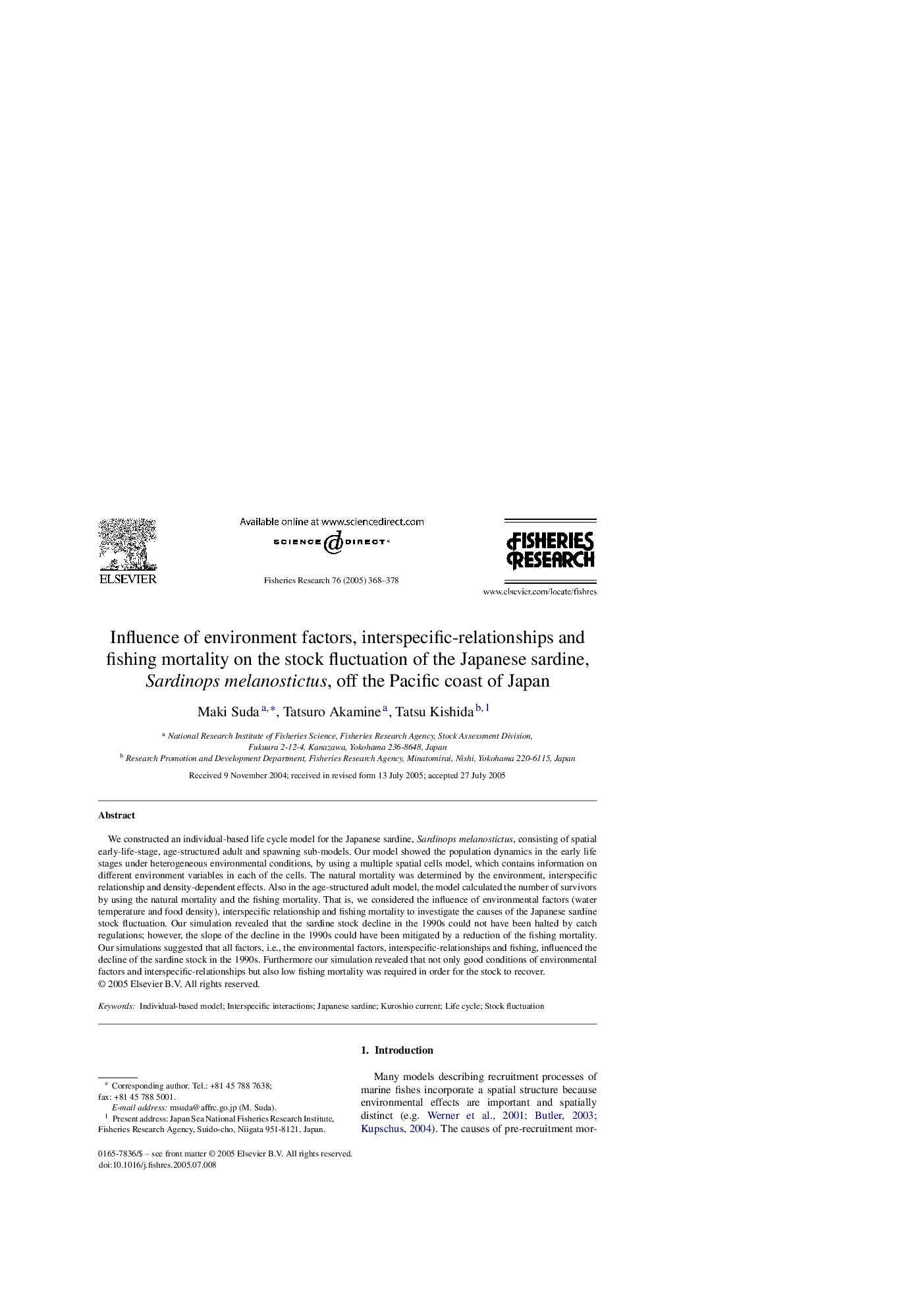| Article ID | Journal | Published Year | Pages | File Type |
|---|---|---|---|---|
| 9481713 | Fisheries Research | 2005 | 11 Pages |
Abstract
We constructed an individual-based life cycle model for the Japanese sardine, Sardinops melanostictus, consisting of spatial early-life-stage, age-structured adult and spawning sub-models. Our model showed the population dynamics in the early life stages under heterogeneous environmental conditions, by using a multiple spatial cells model, which contains information on different environment variables in each of the cells. The natural mortality was determined by the environment, interspecific relationship and density-dependent effects. Also in the age-structured adult model, the model calculated the number of survivors by using the natural mortality and the fishing mortality. That is, we considered the influence of environmental factors (water temperature and food density), interspecific relationship and fishing mortality to investigate the causes of the Japanese sardine stock fluctuation. Our simulation revealed that the sardine stock decline in the 1990s could not have been halted by catch regulations; however, the slope of the decline in the 1990s could have been mitigated by a reduction of the fishing mortality. Our simulations suggested that all factors, i.e., the environmental factors, interspecific-relationships and fishing, influenced the decline of the sardine stock in the 1990s. Furthermore our simulation revealed that not only good conditions of environmental factors and interspecific-relationships but also low fishing mortality was required in order for the stock to recover.
Related Topics
Life Sciences
Agricultural and Biological Sciences
Aquatic Science
Authors
Maki Suda, Tatsuro Akamine, Tatsu Kishida,
